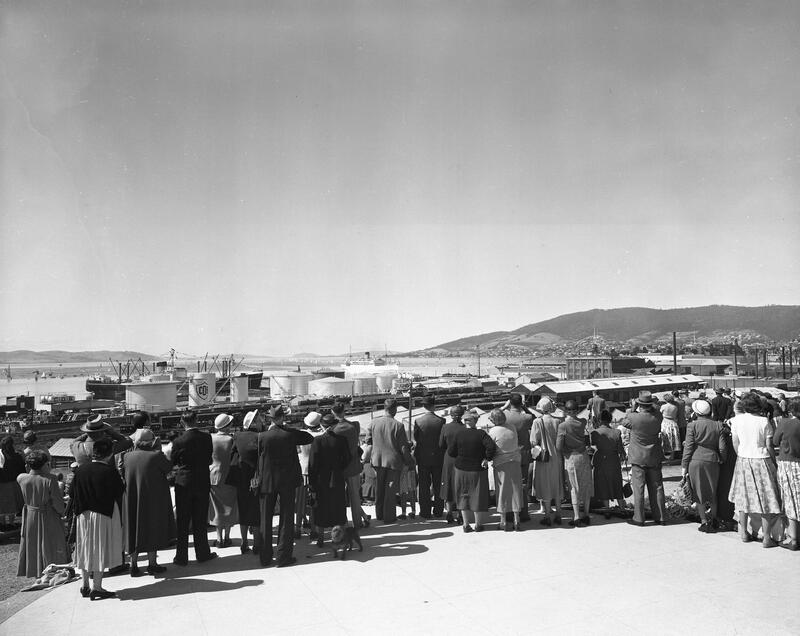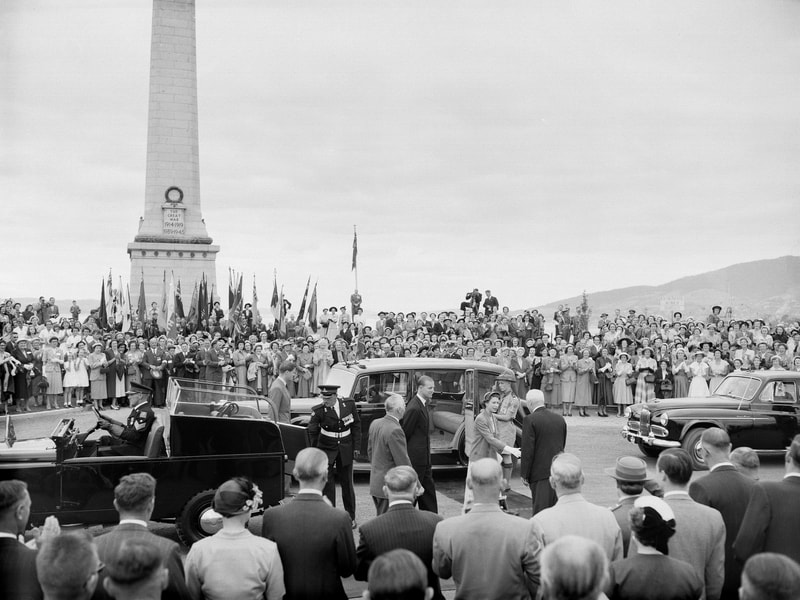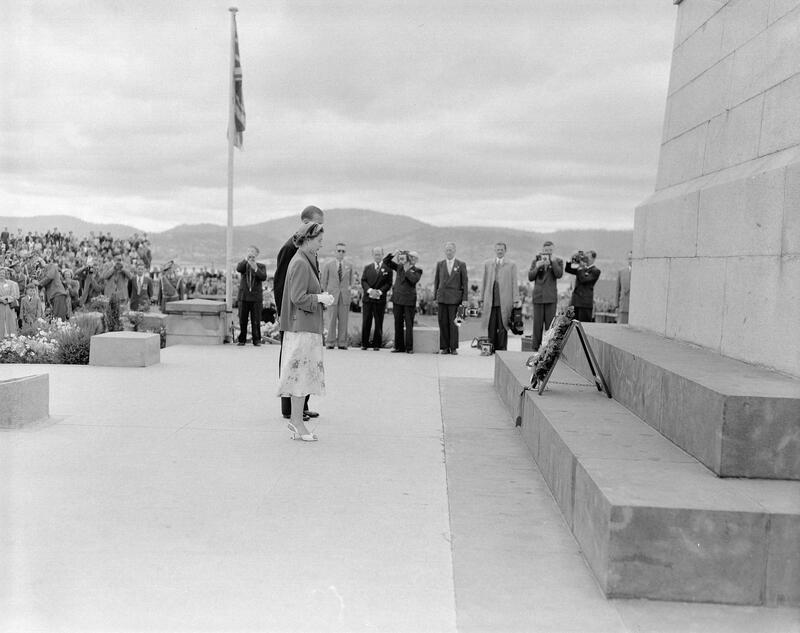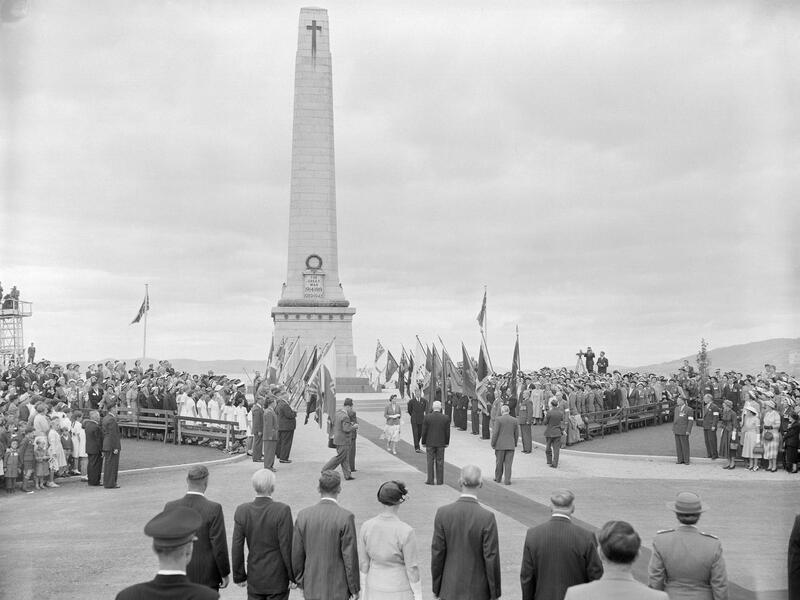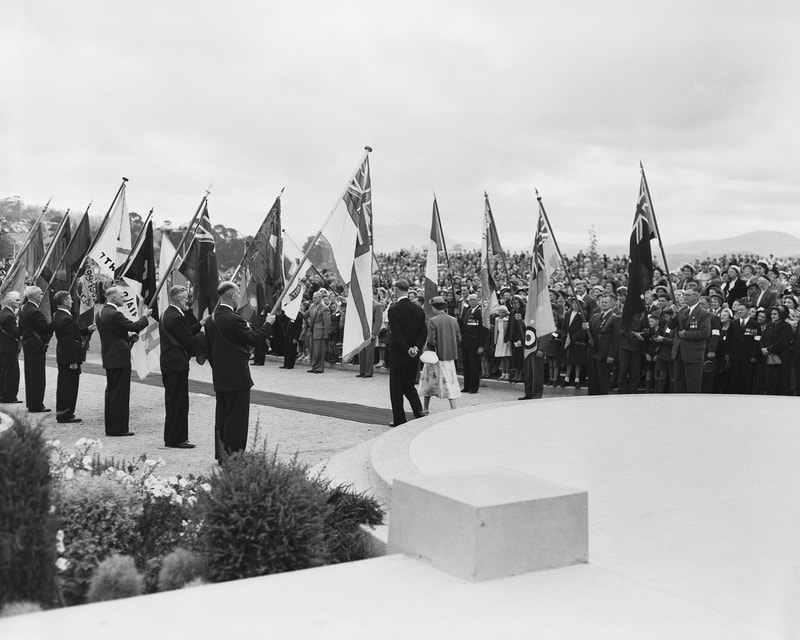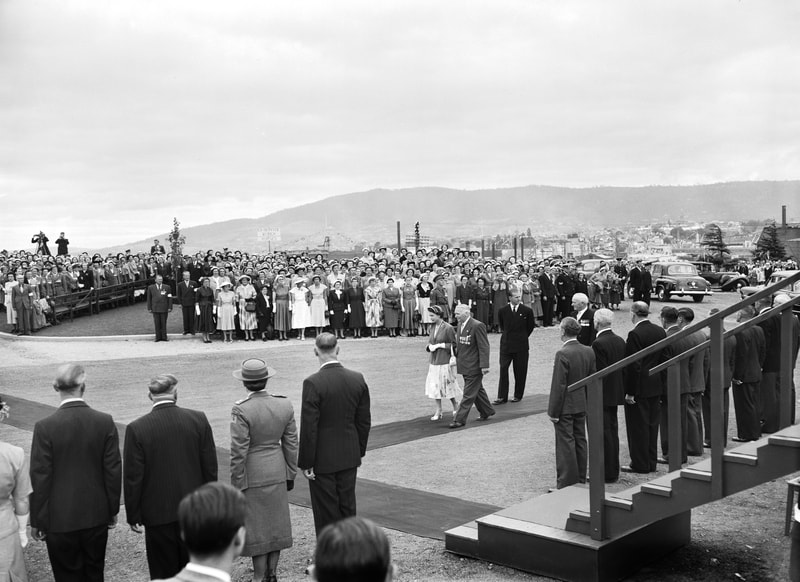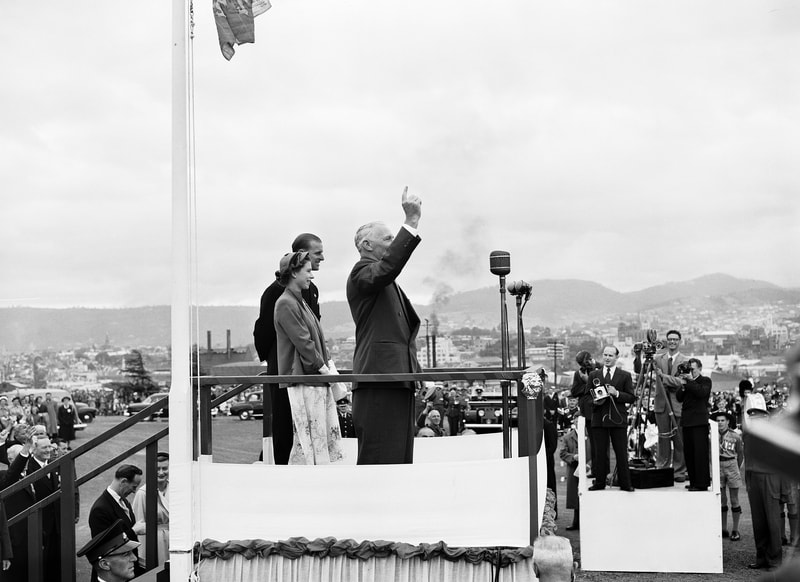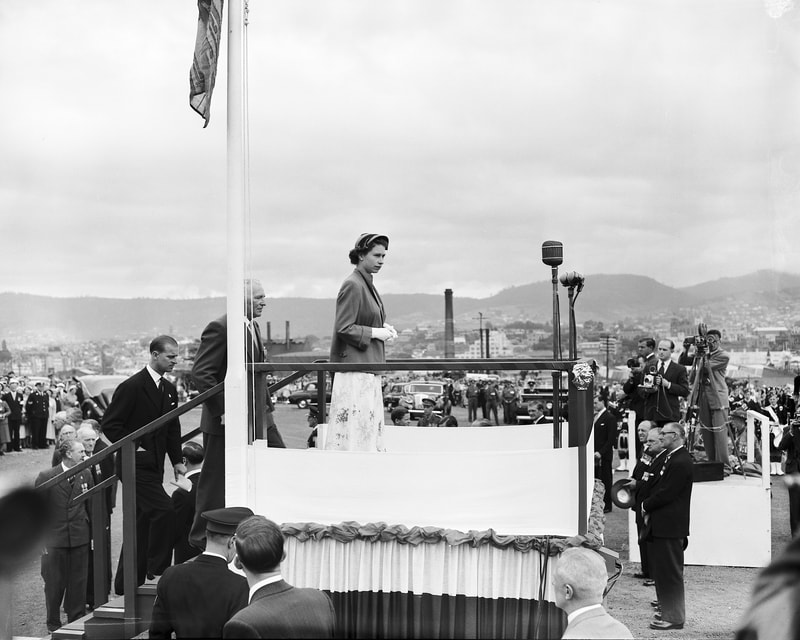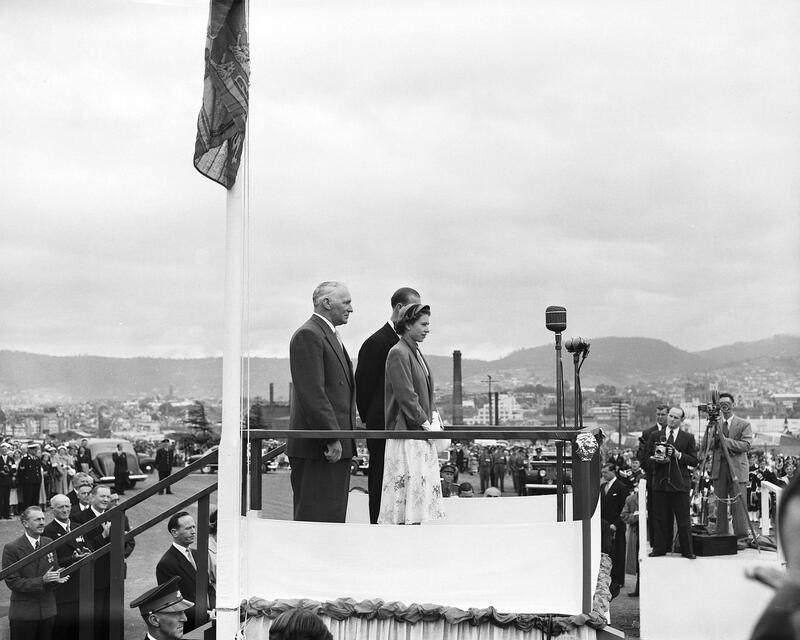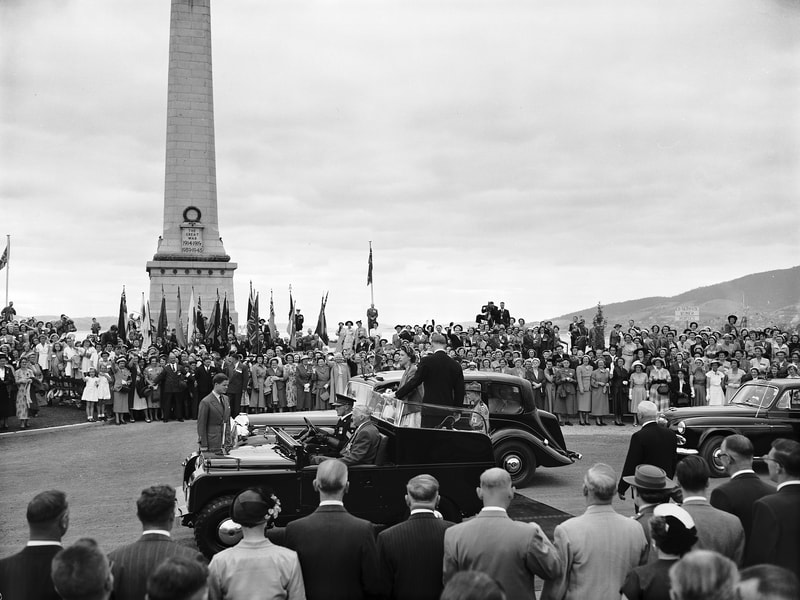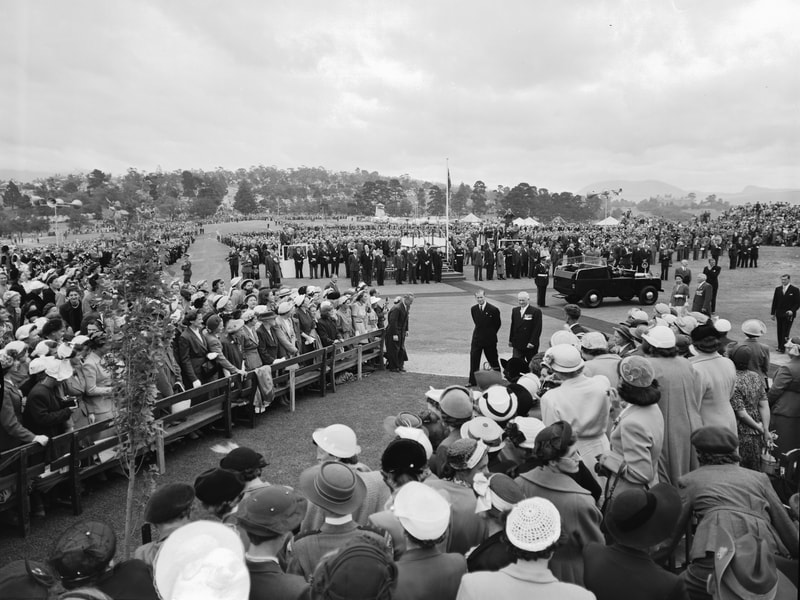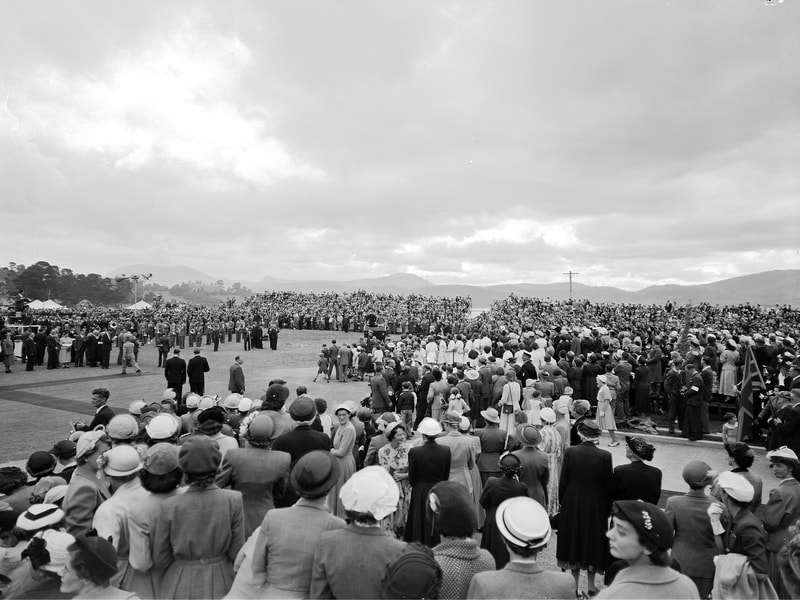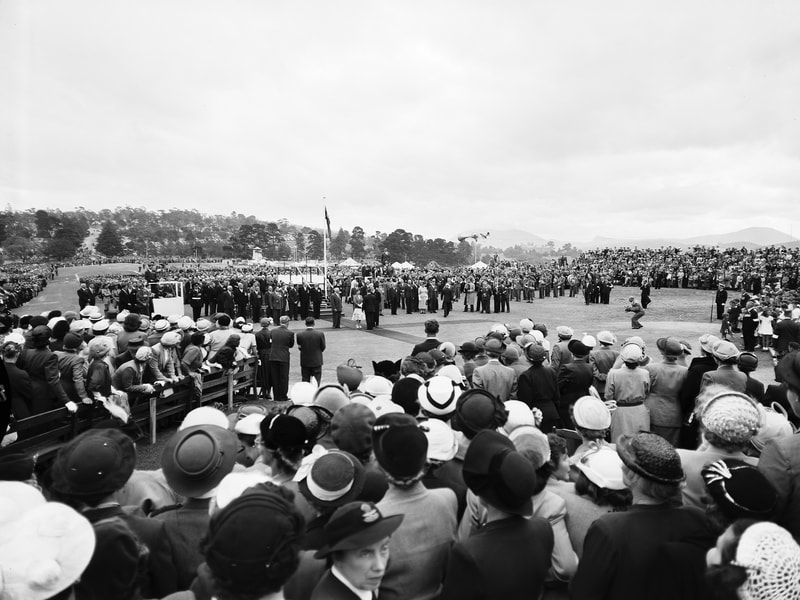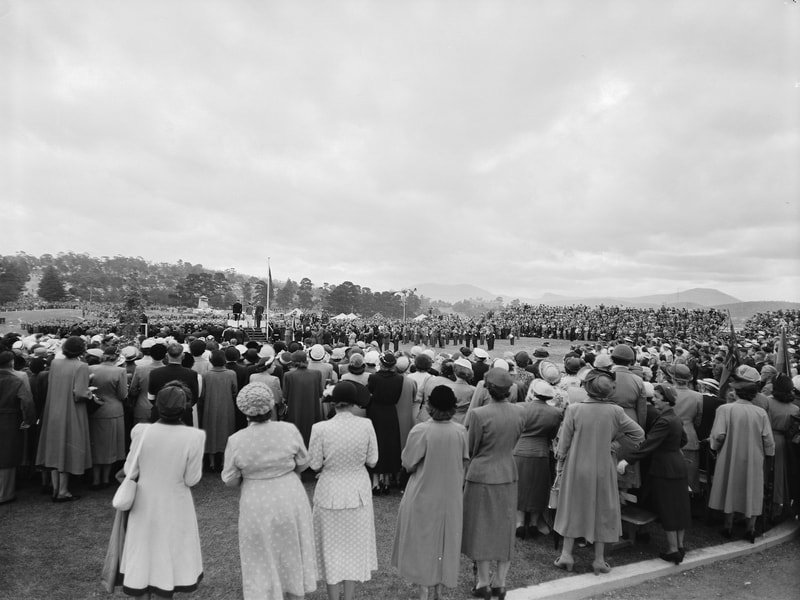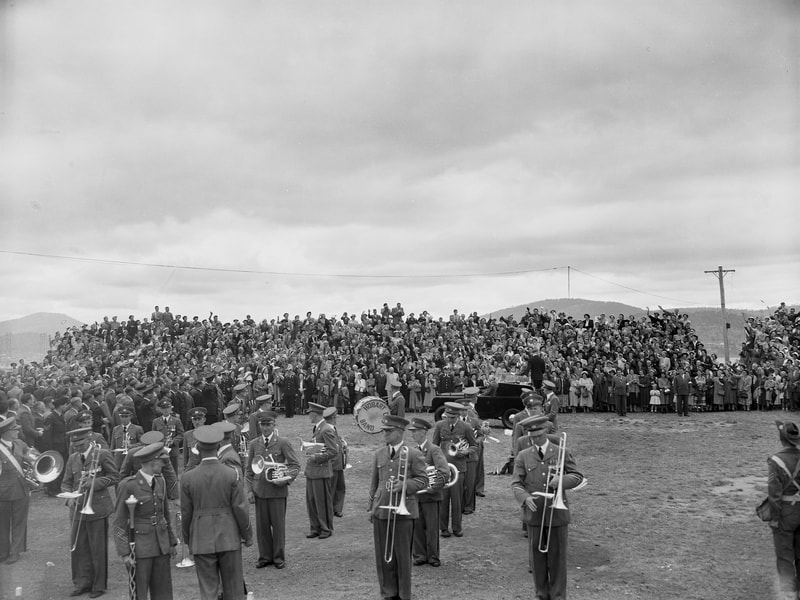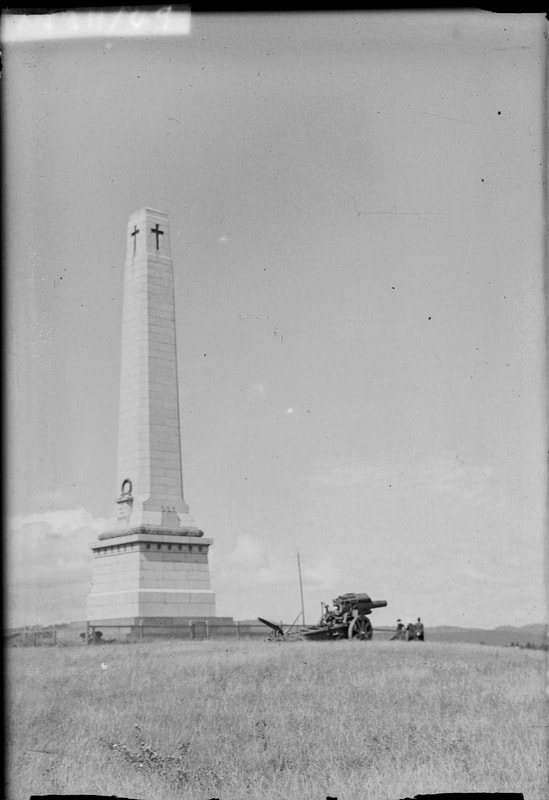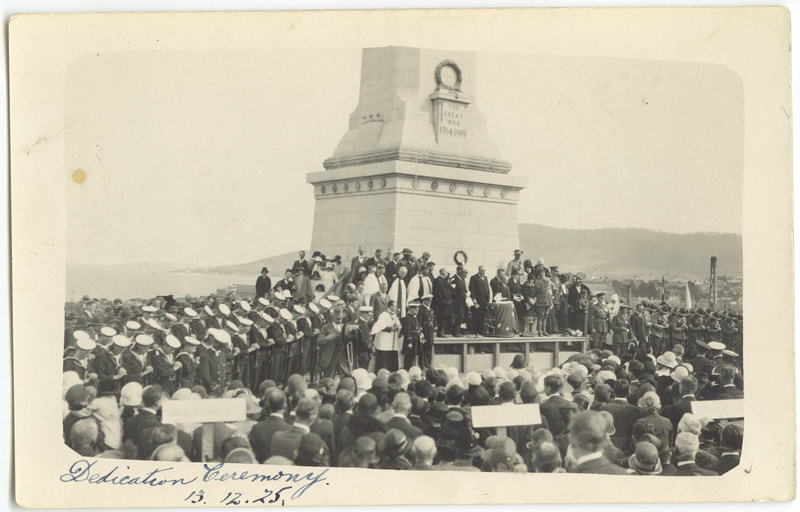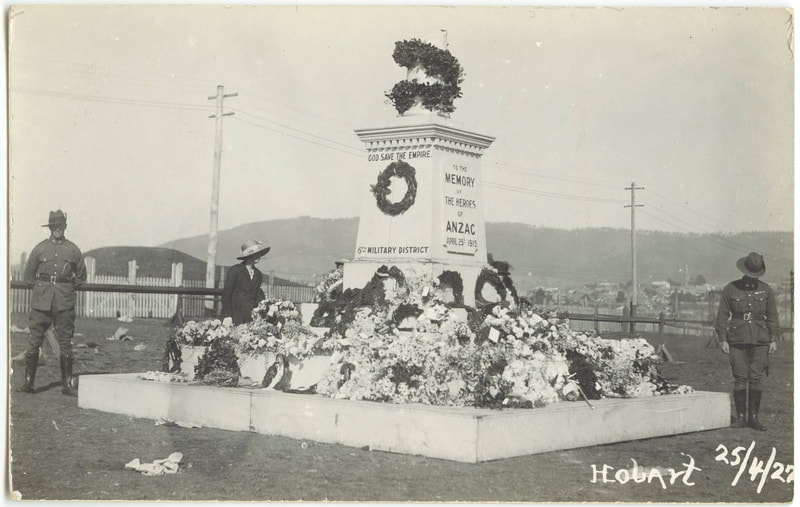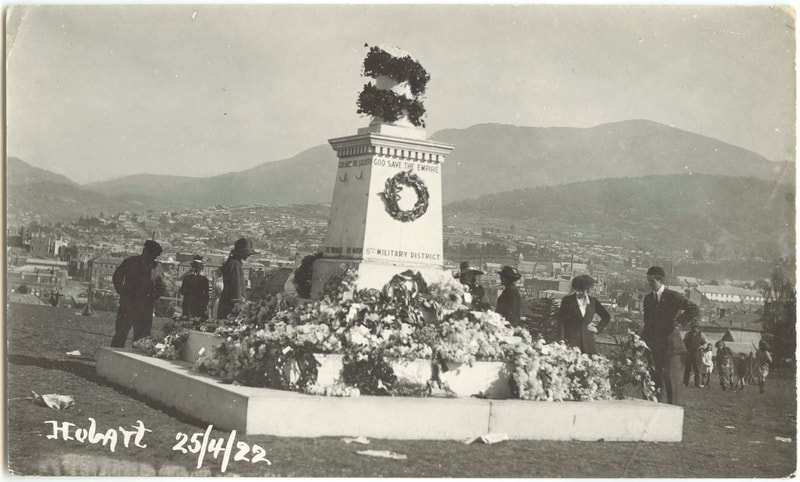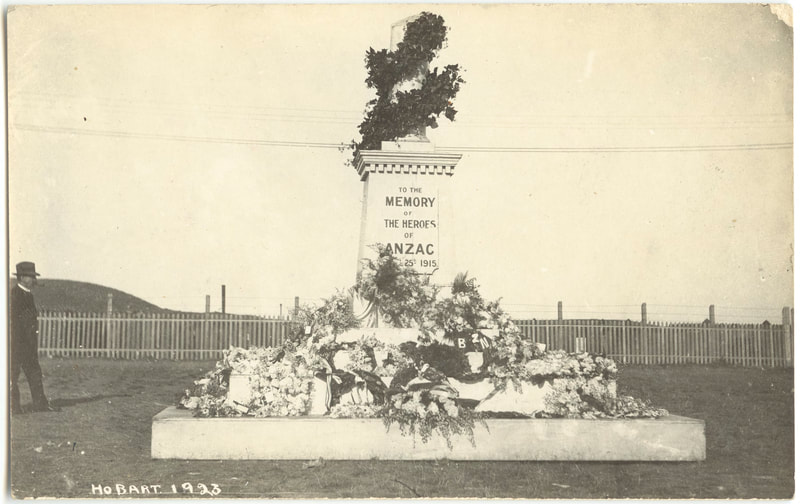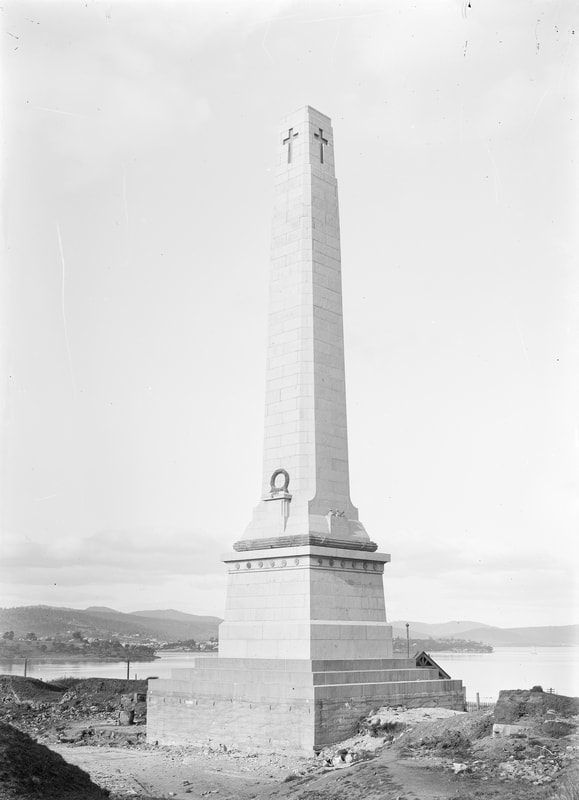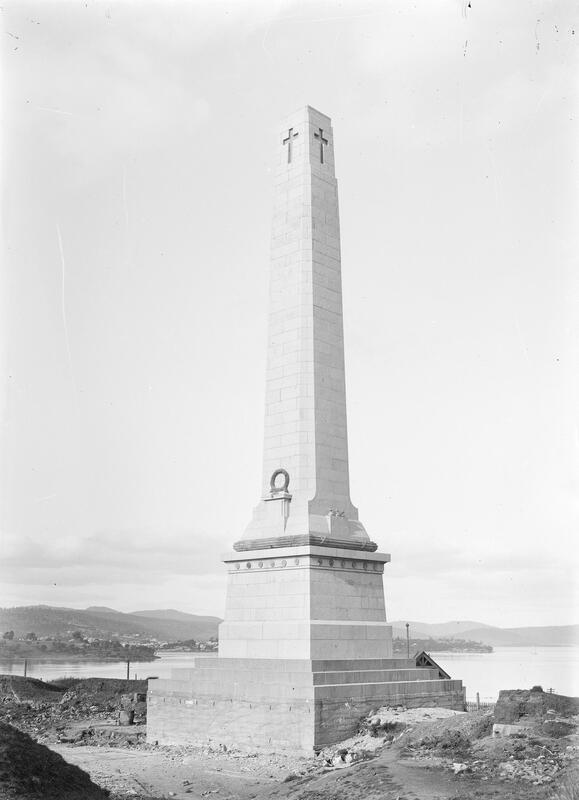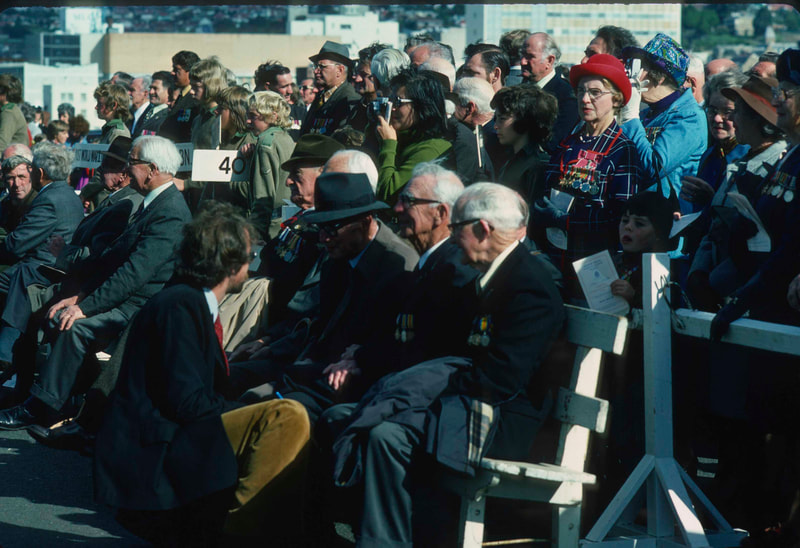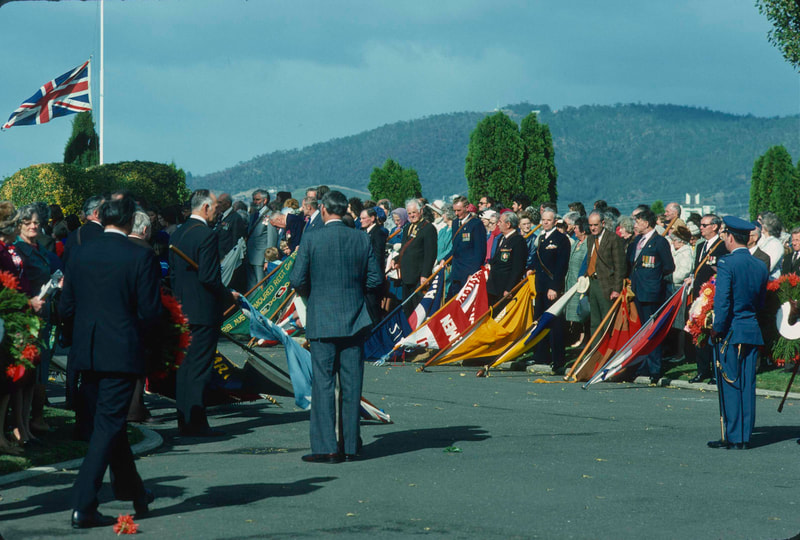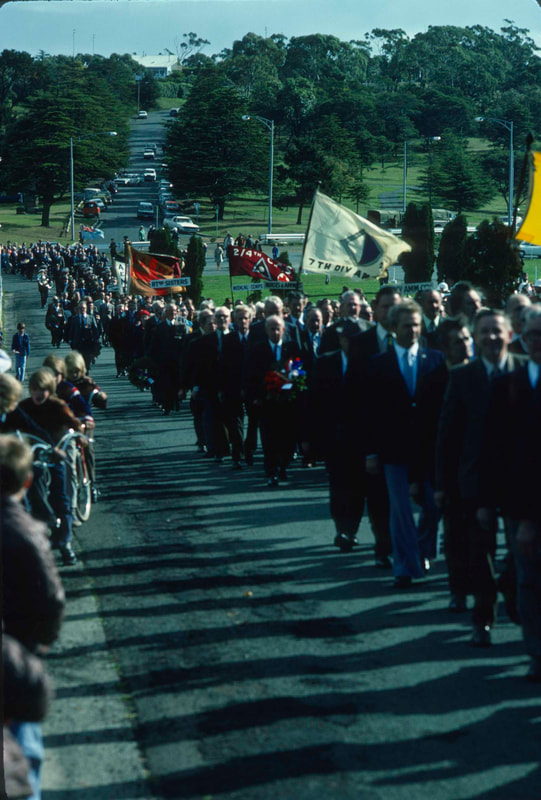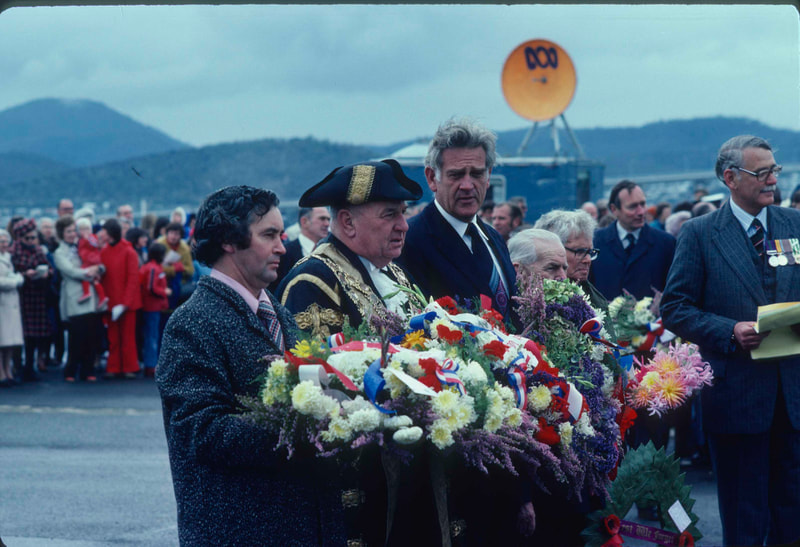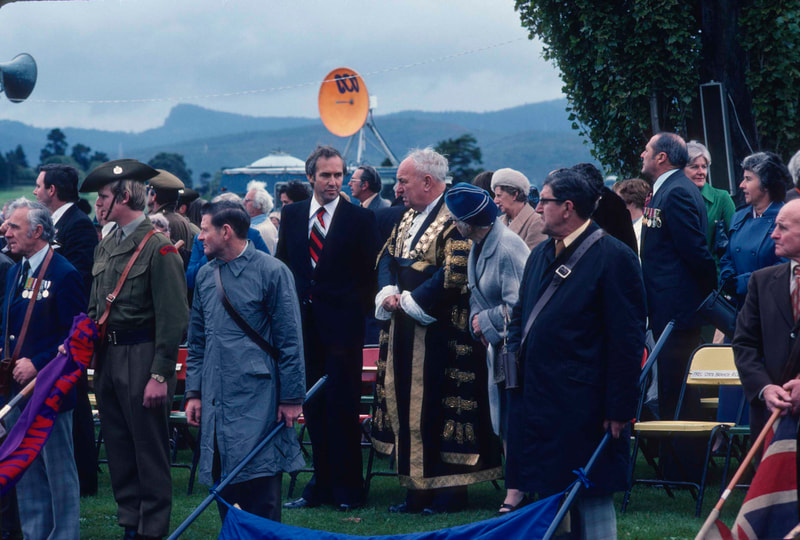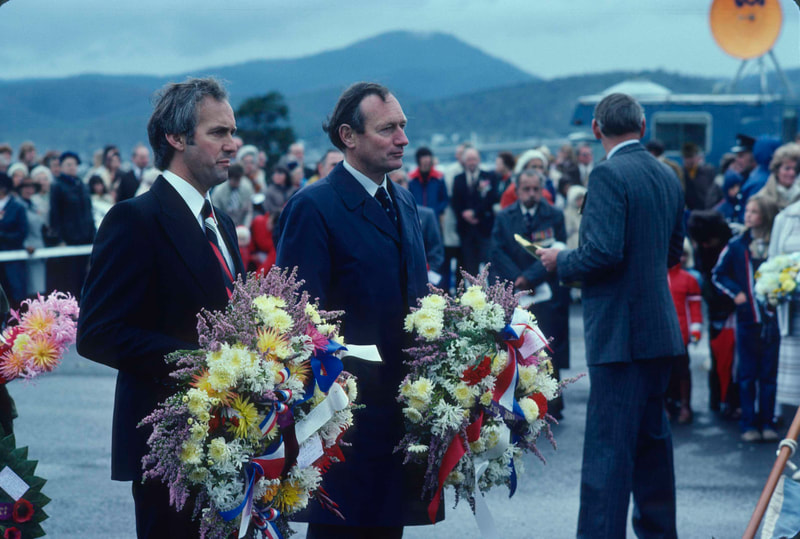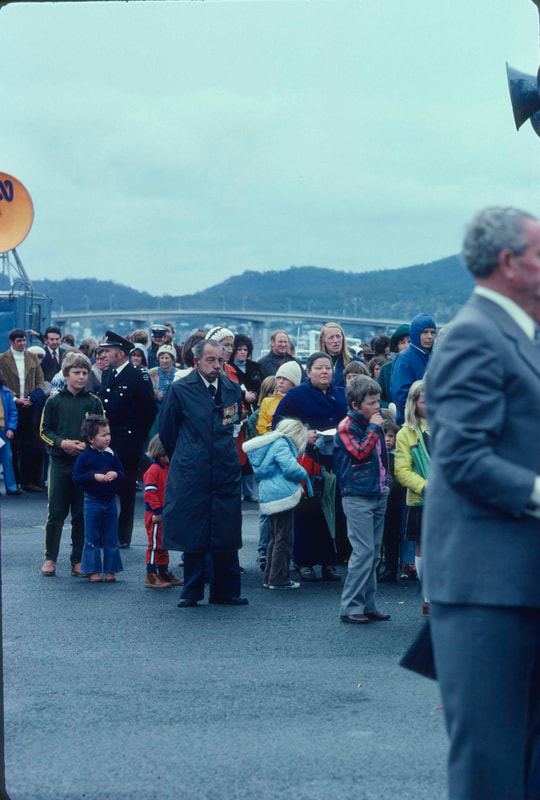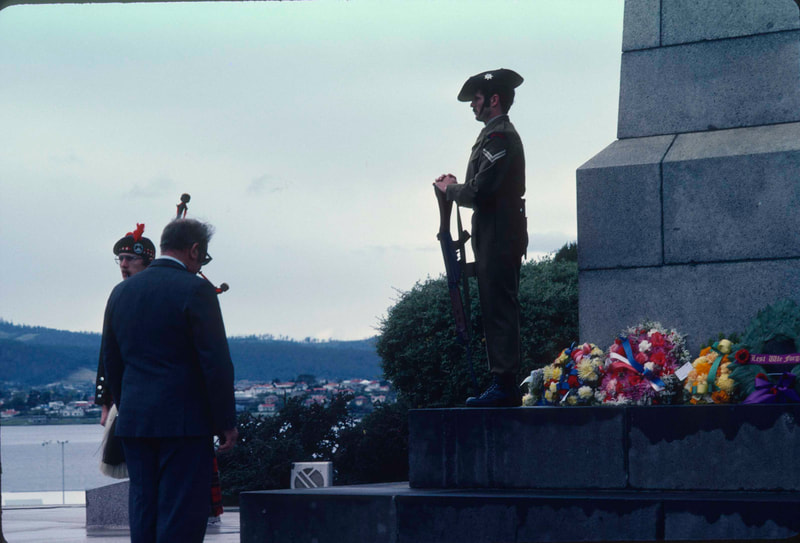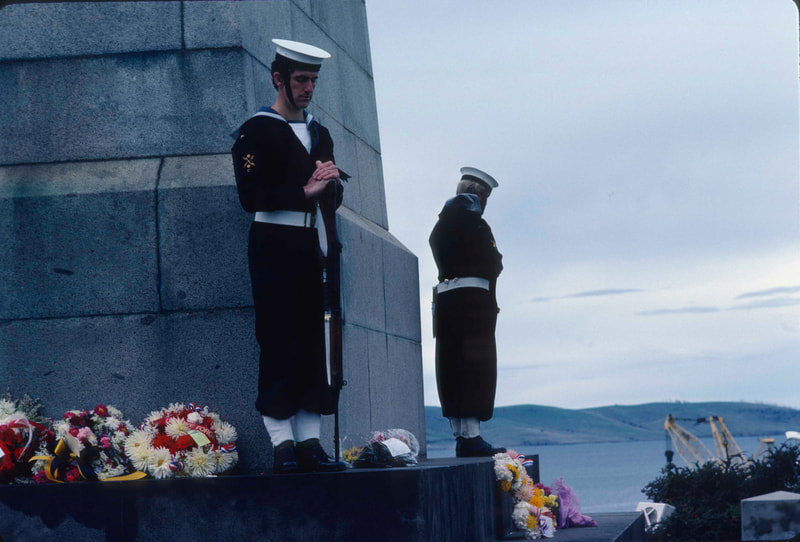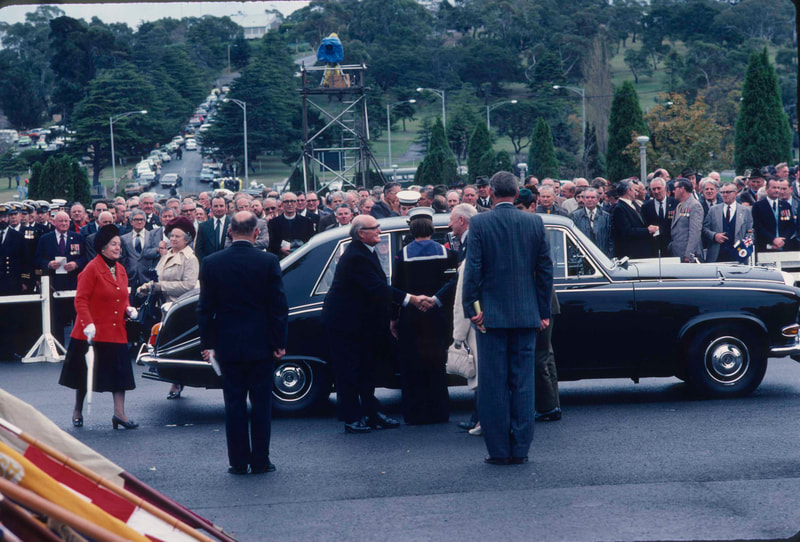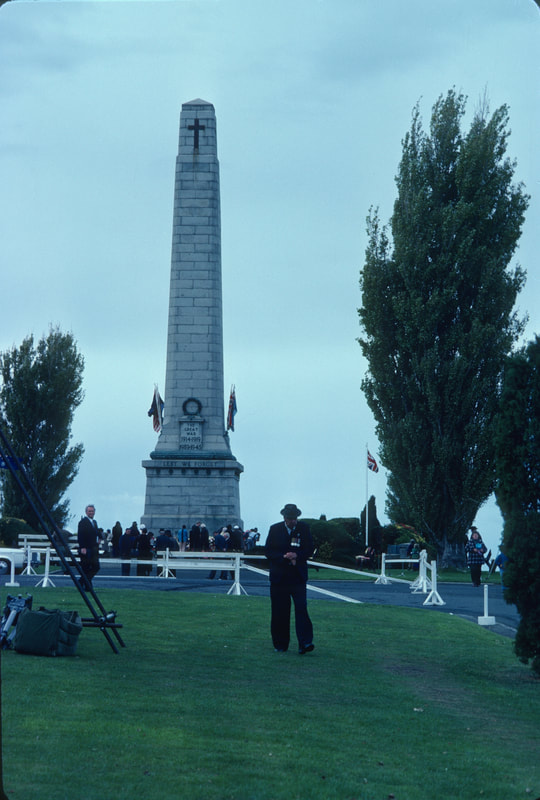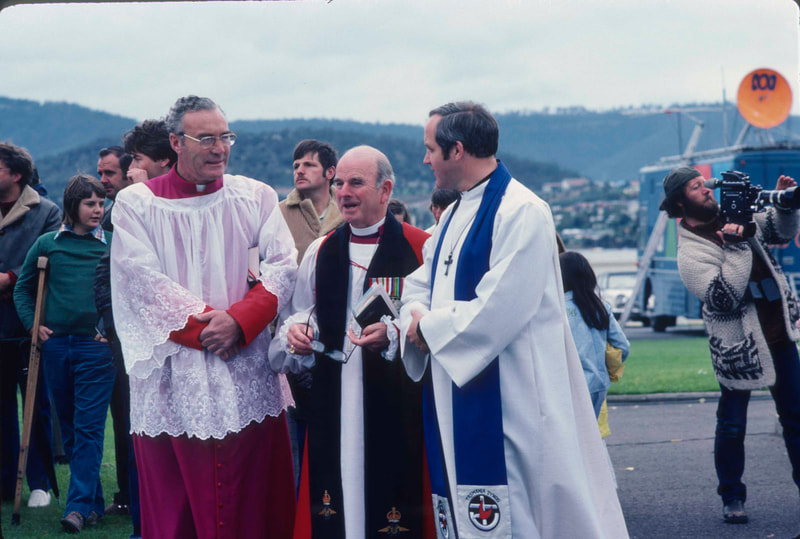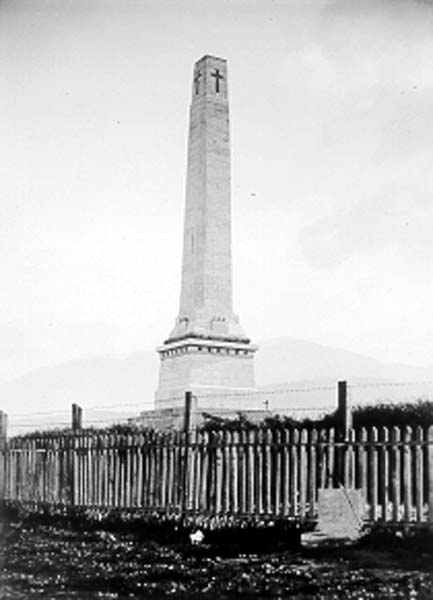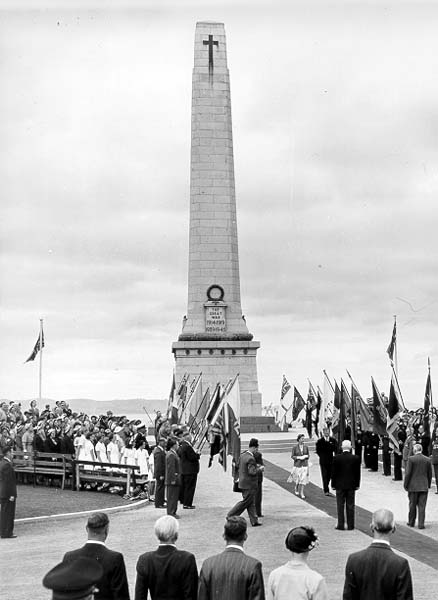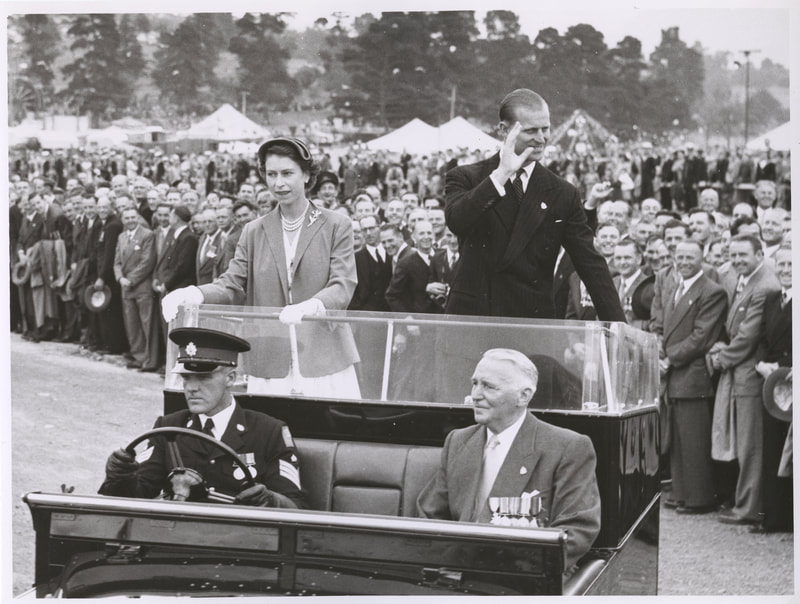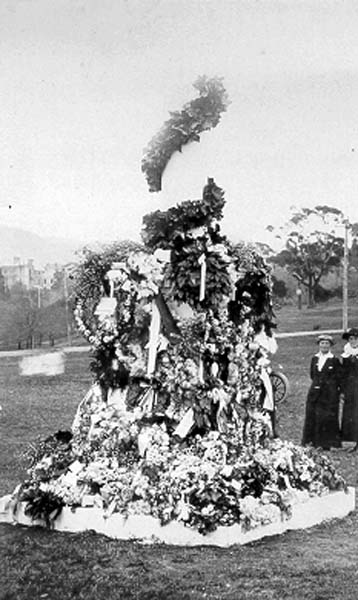The Cenotaph (Hobart War Memorial) is the main commemorative military monument in Tasmania. It is in a very prominent position. Good views of the River Derwent, Mount Wellington and the City of Hobart. It sits above what remains of the Queens Battery.
1923: A public competition for the original design. It was won by Hobart architects Hutchinson and Walker.
1925: The first Anzac Day service was held at partially completed cenotaph.
The cenotaph was originally erected to commemorate the dead from Tasmania inWW1. Later it has served as a memorial for those killed in WW2. It has also served as a memorial for more recent conflicts. “The Korean War", "The Malayan Emergency", "The Indonesian Confrontation", "The Vietnam War", and "Peace-Keeping Operations".
The inscription reads “lest we forget” and “1914-1919.”
There are no names recorded on the Cenotaph.
Main commemoration each year is the Anzac Day services at dawn and mid-morning when a lone bugler plays the last post.
1925: The first Anzac Day was commemorated during construction of the Cenotaph.
The cenotaph has a base of 8 square meters of bluestone. Above this is an obelisk. 23m tall made of grey granite. The shaft of the obelisk is tapered with chamfered edges and is capped with a pyramidal cap. Beneath each cap is a back-lit red opaque cross illuminated constantly.
A bronze laurel wreath on the north face. Six rosettes on each side of the obelisk base. Groups of three flag holders on the north, east and west face of the plinth. On each of the four faces are crests of air force, navy, army and nursing corp. floodlights of each corner illuminate the shaft at night.
Anzac parade is an avenue of poplar trees between the cenotaph and the Tasman highway. An eternal flame burns between Anzac parade and the cenotaph. Anzac parade was landscaped after WW2.
2003: Two earthen walls were erected either side of Anzac parade with special soil. Soil from the birthplace of all VC recipients. Soil from the respective battlefields.
The Tasmanian recipients of the Victoria Cross are:
Boer War
John Hutton Bisden
Guy George Egerton Wylly
World War 1
Walter Ernest Brown
Percy Herbert Cherry
John James Dwyer
Alfred Edward Gaby
Bernard Sidney Gordon
Stanley Robert McDougall
James Ernest Newland
Lewis McGee
Henry William Murray
Percy Clyde Statton
John Woods Whittle
World War 11
Teddy Sheehan
1923: A public competition for the original design. It was won by Hobart architects Hutchinson and Walker.
1925: The first Anzac Day service was held at partially completed cenotaph.
The cenotaph was originally erected to commemorate the dead from Tasmania inWW1. Later it has served as a memorial for those killed in WW2. It has also served as a memorial for more recent conflicts. “The Korean War", "The Malayan Emergency", "The Indonesian Confrontation", "The Vietnam War", and "Peace-Keeping Operations".
The inscription reads “lest we forget” and “1914-1919.”
There are no names recorded on the Cenotaph.
Main commemoration each year is the Anzac Day services at dawn and mid-morning when a lone bugler plays the last post.
1925: The first Anzac Day was commemorated during construction of the Cenotaph.
The cenotaph has a base of 8 square meters of bluestone. Above this is an obelisk. 23m tall made of grey granite. The shaft of the obelisk is tapered with chamfered edges and is capped with a pyramidal cap. Beneath each cap is a back-lit red opaque cross illuminated constantly.
A bronze laurel wreath on the north face. Six rosettes on each side of the obelisk base. Groups of three flag holders on the north, east and west face of the plinth. On each of the four faces are crests of air force, navy, army and nursing corp. floodlights of each corner illuminate the shaft at night.
Anzac parade is an avenue of poplar trees between the cenotaph and the Tasman highway. An eternal flame burns between Anzac parade and the cenotaph. Anzac parade was landscaped after WW2.
2003: Two earthen walls were erected either side of Anzac parade with special soil. Soil from the birthplace of all VC recipients. Soil from the respective battlefields.
The Tasmanian recipients of the Victoria Cross are:
Boer War
John Hutton Bisden
Guy George Egerton Wylly
World War 1
Walter Ernest Brown
Percy Herbert Cherry
John James Dwyer
Alfred Edward Gaby
Bernard Sidney Gordon
Stanley Robert McDougall
James Ernest Newland
Lewis McGee
Henry William Murray
Percy Clyde Statton
John Woods Whittle
World War 11
Teddy Sheehan
